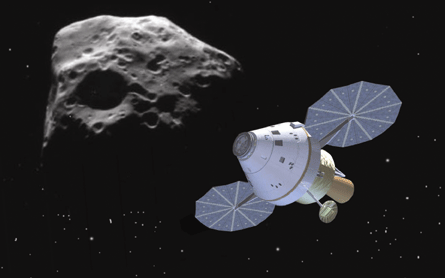A manned mission to a near Earth object (NEO) would require a robotic precursor mission for safety, according to a NASA Constellation programme office study obtained by Flight International.

The robotic reconnaissance spacecraft could detect hazards such as satellites of the asteroid-like NEO and help determine the local gravitational field and the target object's composition and topography.
Many NEOs, which appear to be solid asteroids, are thought to be very porous and often just a tumbling collection of debris left over from the solar system's formation.
A human NEO mission would be the first beyond the orbit of the Moon and is expected to involve two or three astronauts on a 90 to 120-day flight that would involve two weeks of close-proximity operations at an asteroid.
The precursor reconnaissance spacecraft would have a visible camera for surface feature characterisation, a spectrometer for investigation of the NEO's composition and a laser altimeter for determining topography.
"A robotic mission would be required in order to maximise crew safety and efficiency of mission operations at any candidate NEO," says the study paper.
Astronauts would reach the NEO using the Orion crew exploration vehicle, which currently has two variants: Block 1 for missions to the International Space Station carrying six astronauts and the Block 2 lunar version that will carry a crew of four.
A NEO Orion variant would have a high-resolution camera for detailed surface characterisation and optical navigation a lidar system for hazard avoidance, close proximity operations and detailed topography measurement and a radar for tomography to provide detailed interior images of the object.
The Orion would also enable astronauts to conduct extra-vehicular activity at the NEO, to take advantage of human decision-making to rapidly select and move to sites of interest for sample collection.
The study does not specify how such spacewalks would be undertaken, whether by tether or untethered manned manoeuvring unit.
The Orion would also deploy small scientific packages that include autonomous or tele-operated rovers with one or two instruments each.
Other packages could include drilling and excavation equipment, surface anchors and transponders for the long-term study of NEO orbital motion.
NASA has considered launching a NEO variant of the Orion using its proposed Ares IV rocket, the existence of which was exclusively revealed by Flight earlier this year.
Related articles
- NASA quietly sets up budget for Ares IV lunar crew launch vehicle with 2017 test flight target
- UK works on anti-asteroid solutions
- Plan B for space
Source: FlightGlobal.com
















